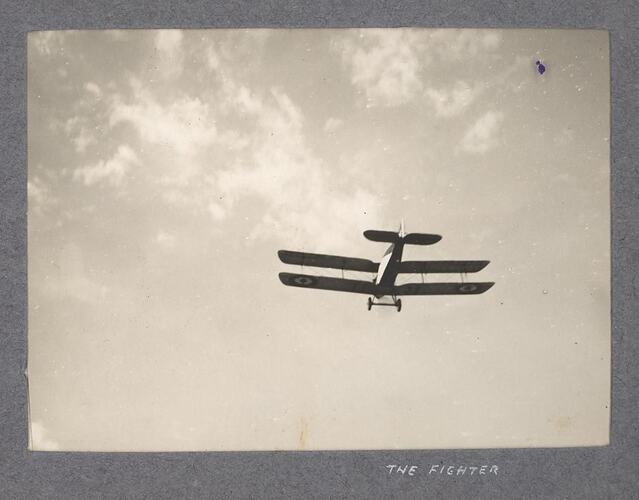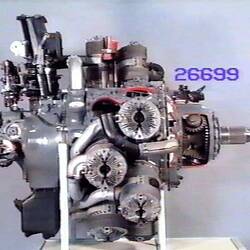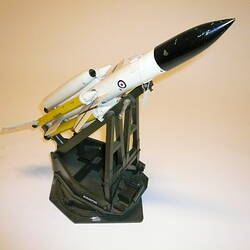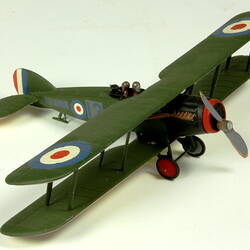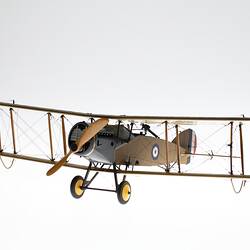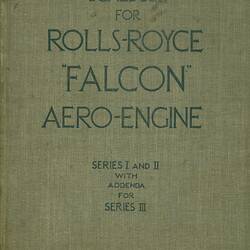First flown on 9 September 1916, the Bristol F.2A was intended as a two-seat scouting/reconnaissance aircraft for the Royal Flying Corps but proved adaptable to a variety of roles during the First World War. The improved F.2B was often used as a fighter aircraft with the gunner providing defence against attacks from behind. A Rolls-Royce Falcon engine was usually fitted but some aircraft had a Sunbeam Arab, Wolseley Viper or Siddeley Puma engine. An attempt to manufacture the F.2B in the USA with a Liberty V12 engine was not a success and no aircraft were built before the war ended. The F2.B remained in RAF service after 1918 many served in colonial outposts such as Iraq and India. The last F.2B left RAF service in 1932 although some remained in service until 1938 with the New Zealand Air Force.
The F.2B, known as the Bristol Fighter was used by 1 Squadron, Australian Flying Corps in Palestine in 1917-18. Some of the Squadron's aircraft cooperated with Colonel T.E. Lawrence and his force of Arab irregular fighters in operations against Turkish forces. In late 1918 the Squadron participated in ground attacks which destroyed much of a retreating Turkish army. The Bristol Aeroplane Co. modified the F.2B after the war into a civilian two or three-seat passenger aircraft called the Bristol Tourer, eight of which were flown in Australia in the 1920s.
More Information
-
Keywords
-
Localities
-
Authors
-
Article types
